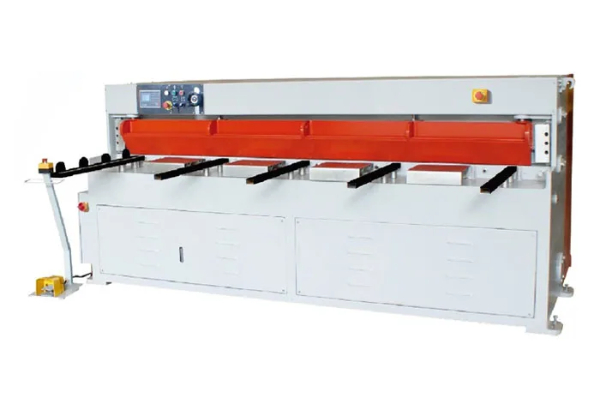
How to Optimize Your HVAC Sheet Metal Machine for Maximum Efficiency
- By:Metmac
- 2024-09-13
- 152
In the relentless battle against energy waste, the HVAC sheet metal machine stands as a formidable weapon. By expertly crafting and shaping sheet metal into ductwork and other components, it plays a pivotal role in ensuring optimal airflow and reducing energy consumption. To unlock the machine’s full potential, meticulous optimization is paramount.
Fine-Tune Calibration
The accuracy of the machine’s calibration directly impacts the quality and efficiency of the sheet metal products it produces. Regular calibration checks are essential to ensure precision cuts, bends, and welds. Using high-quality measuring tools and following the manufacturer’s recommended procedures will minimize deviations and ensure consistent results.
Optimize Blade Geometry
The geometry of the machine’s blades has a profound impact on its cutting and bending performance. Sharp blades produce clean cuts and minimize burring, while dull blades can cause jagged edges and increased friction. Selecting the appropriate blade material and sharpness for the thickness and type of sheet metal being used is crucial for maximizing efficiency.
Lubrication and Maintenance
Regular lubrication and maintenance are indispensable for a smooth-running machine. Lubricating moving parts minimizes friction and wear, extending the life of components and enhancing performance. Replacing worn bearings, belts, and filters promptly prevents mechanical failures and ensures optimal operation.
Automatic Feed Systems
For high-volume production, automatic feed systems can significantly increase efficiency. These systems automate the loading and feeding of sheet metal into the machine, reducing manual labor and minimizing downtime. By eliminating pauses and reducing material handling, automatic feed systems streamline production processes and enhance productivity.
Software Optimization
HVAC sheet metal machines often rely on sophisticated software to control their operations. Optimizing the software parameters can enhance accuracy, minimize waste, and improve overall performance. By optimizing cutting speeds, adjusting bend angles, and utilizing nesting algorithms, the machine’s capabilities can be fully exploited.
Monitoring and Data Analysis
Regular monitoring and data analysis can provide valuable insights into the machine’s performance. By tracking key metrics such as production rates, material usage, and energy consumption, potential inefficiencies can be identified and addressed. Data analysis can guide decision-making, optimize process parameters, and prevent costly breakdowns.
By implementing these optimization strategies, HVAC sheet metal machines can be transformed into highly efficient workhorses. Through precision calibration, optimized blade geometry, meticulous maintenance, automatic feed systems, software optimization, and data-driven monitoring, businesses can maximize productivity, reduce waste, and achieve significant energy savings in their HVAC systems.
-
Advanced Sheet Metal Rolling, Cutting, and Folding Machines for Efficient Fabrication
2025/10/22 -
High-Precision Sheet Metal Bending and Cutting Solutions for Modern Manufacturing
2025/10/22 -
High-Precision Solutions from Leading Sheet Metal Cutting Machine Manufacturers
2025/09/11 -
Reliable Sheet Metal Equipment for Sale to Support Precision Fabrication
2025/07/17
-
Advanced Sheet Metal Rolling, Laser Cutting, and Folding Machines for Precision Fabrication
2025/10/31 -
High-Performance Sheet Metal Bending and Cutting Machines for Modern Fabrication
2025/10/31 -
High-Quality Sheet Metal Equipment for Sale: Efficient Solutions for Modern Manufacturing
2025/10/31 -
High-Performance Sheet Metal Equipment for Sale: Forming and Shearing Solutions for Modern Fabrication
2025/10/22
-
A Guide to the Latest Innovations in Sheet Metal Folding Machines
2024/11/29 -
Key Features to Consider When Investing in a Sheet Metal Folding Machine
2024/11/28 -
Enhancing Precision with Advanced Sheet Metal Folding Machines
2024/11/27 -
How to Choose the Right Sheet Metal Folding Machine for Your Workshop
2024/11/26






